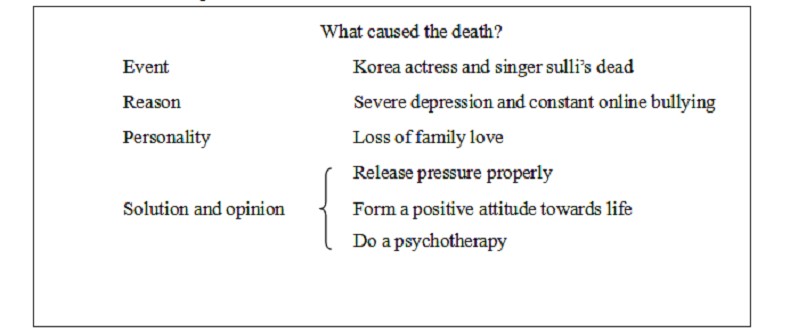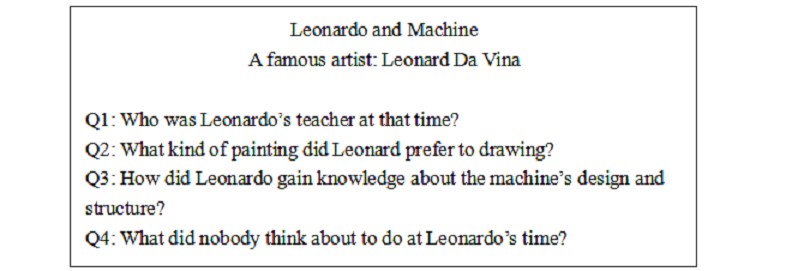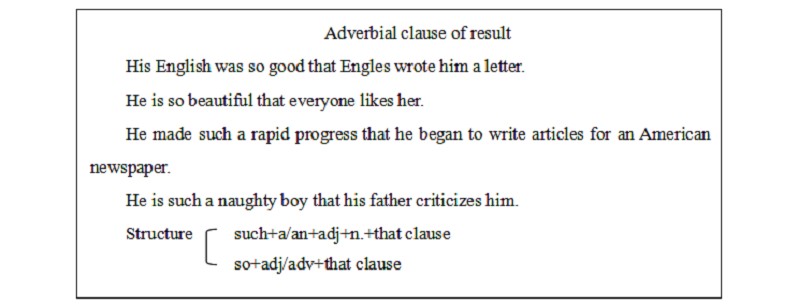题目一:写作教学
1.题目:写作教学
2.内容:
The South Korean pop star and actress Sulli, who had spoken out against cyber-bullying, was found dead at her home south of Seoul on Monday, announced local police. According to her manager, the 25-year-old had long grappled with severe depression and constant online bullying directed against her. The investigation into the cause of her death is ongoing. The preliminary investigation found no signs of foul play, and police did not find a suicide note.
3.要求:
(1)组织学生谈谈对该现象的看法;
(2)涉及议论文的写作结构;
(3)全英授课。
【参考解析】
What caused the death?
一、Teaching aims
Knowledge aims:
Students can master the writing pattern of argumentation.
Students can collect various opinions on latest news.
Ability aim:
Students can improve their writing skill in writing an argumentation.
Emotional aim:
Students can develop a positive attitude towards their life.
二、Key and difficult points
Key point:
Know how to show their opinions in a logical way and can collect different insights to a topic.
Difficult point:
Know how to write an argumentation and form a correct life value.
三、Teaching procedures
Step 1: Warming-up
1. Greetings.
2. Show students a short music video about Sulli.
3. Ask students, “What happened to this girl”? Then lead to the new topic “what caused sulli’s death?”
Step 2: Pre-writing
1. Ask students to read the material and figure out the main idea.
2. Ask students to have a group discussion about “what caused the death” and reasons.
3. Ask students to give their solutions and opinions on the issue.
4. At last, teach students the structure of argumentation according to the discussion. Tell them that they can briefly introduce the news and explain the reasons in the first paragraph, give solutions and opinions in the second paragraph, and make conclusions in the last paragraph.
Step 3: While-writing
Ask students to write the composition within 15 minutes, then ask students to pay attention to the structure, grammar, punctuation. In their writing, the teacher will give a proper instruction.
Step 4: Post-writing
1. Ask students to do a self-editing and then do a peer-editing.
2. Ask one or two students to share their compositions.
3. The teacher will give proper evaluations.
Step 5: Summary and Homework
Summary: do a summary together, and tell students that we should form a positive attitude towards life and know how to release pressure.
Homework: ask students to find more methods to release pressure and share it next class.
四、Blackboard design

五、Teaching reflection
题目二:Christmas
1.题目:Christmas
2.内容:
After lunch, the adults slept on the sofa with the queen’s speech on the television while we played the cards. Then we had a tea with a huge Christmas cake with snowman. By bedtime the children felt tired and stopped. Then we all went a deep, deep sleep.
3.基本要求:
(1)朗读全文;
(2)配合教学内容适当板书;
(3)根据所给材料的内容,设计讲解单词构词法的教学活动;
(4)用英文试讲;
(5)试讲时间:10分钟。
【参考解析】
Christmas
一、Teaching aims
Knowledge aims:
Students can be familiar with how compound words are constructed with the help of examples such as: snowman, bedtime.
Students can get the basic knowledge of morphology.
Ability aim:
Students will be able to analyze the way that an English word is constructed.
Emotional aim:
Students can build confidence in enlarging their vocabulary.
二、Key and difficult points
Key point:
How to understand the definition and basic rule of compound words.
Difficult point:
How to analyze the way that an English word is constructed.
三、Teaching procedures
Step 1: Warming-up
1. Greetings.
2. Let students enjoy a song named Santa Claus is Coming to Town and ask them what the song is about. The song goes like this:
You better watch out.
You better not cry.
You better not pout.
I’m telling you why.
Santa Claus is coming to town.
He’s making a list.
He’s checking it twice.
He’s gonna find out who’s naughty or nice.
Santa Claus is coming to town.
Ask students to answer the question. Then tell them that the song is about Christmas and Christmas is also the topic for today’s lesson.
Step 2: Presentation
1. Read the short paragraph and ask students to find out the words that are similar to “classroom” in terms of form.
2. Ask students to analyze the similarities of these words: classroom, snowmen, bedtime.
3. Summarize the definition of compounds: a new word that is made up of two or more words and the basic way of constructing a compound noun: noun plus noun.
Step 3: Practice
1. Mechanical drilling
Ask students to write the plural form of these compounds: snowman, bedroom, newspaper, schoolmate, pen-friend.
Then summarize the special rule: the plural form of a compound noun is decided by the core noun.
2. Meaningful drilling
Play the game-Word Master, the game goes like this:
Step 1: divide students into 2 groups;
Step 2: explain the rules: students from both groups are given 2 minutes to write on the blackboard examples of compound nouns as many as possible and repeated words from the same group are not counted, when time’s up, the group that make more examples win the game;
Step 3: Teacher acts as the judge to declare the winner of the game.
Step 4: Production
Ask students to work in groups of 4 to make a story using the words on the blackboard. 5 minutes will be given. When time’s up, one group will be invited to share their story then teacher will evaluate their performance.
Step 5: Summary and Homework
Summary: invite one student to summarize today’s lesson.
Homework: ask students to discover more ways of word formation.
四、Blackboard design

五、Teaching reflection
题目三:The City of the Future
1.题目:The City of the Future
2.内容:
What will the future look like? No one knows for sure, and making predictions is a risky business. But one thing is certain—They are going to get bigger before they get smaller. In the future, care for the environment will become very important as earth’s natural resources run out. We will use lots of recycled materials, such as plastic, alumirum, steel, glass, wood and paper, and we will waste fewer natural resources. We will use also have to rely more on alternative energy, such as solar and wind power. All this seems certain, but there are plenty of things about city life in the future which are not certain. To find out what the young think about the future of urban life, a teacher in Texas in the United States asked his students to think how they would run a city of 50,000 people in the year 2025.
3.基本要求:
(1)朗读所给段落;
(2)配合教学内容适当板书;
(3)重点讲解加黑体单词;
(4)用英语试讲10分钟。
【参考解析】
The City of the Future
一、Teaching aims
Knowledge aims:
Students can understand the content of the passage.
Students can master the meaning of the new phrases “for sure” “making predictions” “run out” “rely more on”.
Ability aim:
Students will develop their reading strategies like guessing the word in their reading process.
Emotional aim:
Students can foster the awareness of protecting environment.
二、Key and difficult points
Key point:
To master the usage and meaning of the phrases.
Difficult point:
To foster the awareness of protecting environment.
三、Teaching procedures
Step 1: Warming-up
1. Greetings.
2. Show them a video about the past life in city, and ask students “What is your feeling? What is the difference between the past life and today’s life in city?”
Step 2: Presentation
1. Ask students to open the book and read the passage to students and ask students “What is the main idea of this passage.”
2. Ask students to read the passage again and circle the phrases that they can’t understand. Then invite a student to write down the phrases on the blackboard.
3. Invite some students to guess the meaning and then explain the new phrases to students.
Step 3: Practice
Ask students to use the new phrases to translate Chinese sentences on the screen into English.
Step 4: Production
Divide students into groups of 4 and give students 10 minutes to have a discussion about “What do you think of the future of urban life?” by using the new phrases as much as possible. After that, invite some groups to share their opinions.
Step 5: Summary and Homework
Summary: invite a student to read the new phrases, explain the meaning and conclude the main idea of the lesson.
Homework: ask students to surf on the internet and find more ways about caring for the environment.
四、Blackboard design

五、Teaching reflection
题目四:听力教学
1.题目:听力教学
2.内容:
Leonardo became interested in machines when he was a boy. Some of his early drawings showed clearly how various machine parts worked while he was studying under Verrocchio. Leonardo observed and used a variety of machines. By studying and drawing them, Leonardo gained knowledge about their design and structure. Artists in Leonardo’s time knew how to build and repair mary familiar kinds of machines, but nobody seemed to have thought about inventing new ones.
3.基本要求:
(1)朗读全文;
(2)设计引导学生进行预测的教学活动;
(3)配合教学内容适当板书;
(4)全英授课。
【参考解析】
Leonardo and Machines
一、Teaching aims
Knowledge aims:
Students can understand the content of the listening material.
Ability aim:
Students will develop their listening abilities of catching key words.
Students can improve their skill of prediction.
Emotional aim:
Students can foster the awareness of innovation.
二、Key and difficult points
Key point:
To understand the listening material.
Difficult point:
To foster the awareness of innovation.
三、Teaching procedures
Step 1: Warming-up
1. Greetings.
2. Show a clip of a very famous video named Good Will Hunting. Tell them Will Hunting, the protagonist of the movie is a mathematical genius, and today we will learn something from another genius--Leonardo.
Step 2: Pre-listening
Show a picture to students: a man is looking at a machine and thinking. Tell them this picture is from our textbook. Ask them who is the man and then they should have a prediction about what the listening material is mainly talking about according to the picture.
Step 3: While-listening
1. Extensive listening
Read the passage for students and ask them “what is Leonardo’s interest?” Meanwhile, let them check their prediction. After that, invite one student to write down the answer on the blackboard.
2. Intensive listening
Play the tape and ask students to answer some questions:
Q1: Who was Leonardo’s teacher at that time?
Q2: What kind of painting did Leonard prefer to drawing?
Q3: How did Leonardo gain knowledge about the machine’s design and structure?
Q4: What did nobody think about to do at Leonardo’s time?
Then lead students to write the answers on the blackboard.
Step 4: Post-listening
Ask students to talk about some great persons and their achievements in groups of 4 and encourage students to be creative. 5 minutes will be given for their conversation. Then invite some groups to share.
Step 5: Summary and Homework
Summary: sum up what we have learned today and tell them there should be a sense of innovation at any time.
Homework: search some famous speech of some great persons and try to dubbing them.
四、Blackboard design

五、Teaching reflection
题目五:Adverbial clause of result
1.题目:Adverbial clause of result
2.内容:
In fact, his English in one of these articles was so good that Engles wrote him a letter and praised him for it. He made such a rapid progress that before long he began to write articles in English for an American newspaper.
3.基本要求:
(1)根据文本讲解结果状语从句;
(2)10分钟试讲;
(3)全英授课。
【参考解析】
Adverbial clause of result
一、Teaching aims
Knowledge aim:
Students can master the grammar rule of adverbial clause of result.
Ability aim:
Students will improve their analytical ability, and know how to use the grammar point.
Emotional aim:
Students will develop great interest in learning grammar.
二、Key and difficult points
Key point:
The structure of “such...that” and “so...that”.
Difficult point:
Know how to analyze and summarize the grammar structure and be active in learning grammar.
三、Teaching procedures
Step 1: Warming-up
1. Greetings.
2. Show students two short videos called Old Friends.
3. Ask students to watch them carefully and then to find the descriptions in different friends, in which some words or phrases like “as a result”, “so” and “therefore” are used. Later, tell students that we will learn another way to describe result.
Step 2: Presentation
1. Ask students to read the passage and ask them two questions, “Why does Engles praised him? And why can he write articles for American newspaper?”
2. Show students a new passage and ask them to find more sentences with same structure.
3. Guide students to find the similarity among the sentences. They could work in groups of 4 for discussion.
4. Then summarize the rules: “such+a/an+adj/adv+that clause” “so+adj/adv+that clause”, and tell them that the structures are used to describe result.
Step 3: practice
Sentence master:
Divide students into four groups with ten students in each group. Ask students to have a competition by using the grammar structure to make sentences as more as they can. The group who makes sentences the most will be the sentence master.
Step 4: Production
Look and say:
Ask students to make a short story in groups of 4. Any topic is fine. They need to use the grammar point we learned today as much as possible. 5 minutes will be given before inviting a few representatives to present. Give encouragement.
Step 5: Summary and Homework
Summary: do a summary together and arouse students’ passion to learn grammar.
Homework: ask students to draw a picture of one of their friends, introduce him or her by using the grammar structure next class.
四、Blackboard design

五、Teaching reflection
题目六:Starts to Classify Garbage
1.题目:Starts to Classify Garbage
2.内容:
China does have a lot of free land, but it also has a large population. China is feeding 1/5 of all human beings with 1/15 of the land on Earth. It’s a hard job that is made even harder due to imported waste.
And now China is fed up. The country started limiting waste imports roughly since 2016 and completely banned 24 types of solid waste in January 2018. It’s easy to understand: You can’t expect China to deal with the world’s garbage forever. But to stop the imports is not enough for China to become sustainable. Now the country is targeting its own people to prevent pollution. One of the first steps is forced garbage classification. Sort the garbage, then we can talk about recycling.
Shanghai is the first city to try this by dividing all trash carts in the city into four kinds: Dry, wet, hazardous and recyclable. To deal with it on your own, one day or another.
3.基本要求:
(1)设计合理的阅读课;
(2)10分钟试讲;
(3)全英授课。
【参考解析】
Starts to classify garbage
一、Teaching aims
Knowledge aim:
Students can master the main idea of the passage.
Ability aim:
Students will improve their reading ability including scanning and skimming.
Emotional aim:
Students will develop a good awareness of classifying garbage.
二、Key and difficult point
Key point:
Students will know the main content of the reading material.
Difficult point:
Know how to find the information though different reading skills and realize the importance of classifying garbage.
三、Teaching procedures
Step 1: Warming-up
1. Greetings.
2. Show students a short video about garbage in wasteland and ask students about their feelings after watching the video.
3. Lead to the new topic.
Step 2: Pre-reading
Ask students a question, “What do you think of garbage classification?” Then give them 3 minutes and let them have a free talk. Then ask students to share their opinions. Ask students to make predictions according to the topic they discussed.
Step 3: while-reading
1. Read the passage quickly and tell the teacher the main idea of the short passage. (2 minutes).
2. Read the passage for the second time and answer, “Why does China stop importing waste?” (4 minutes)
3. Read the passage for the last time and answer, “What will China do to achieve recycling?” (4 minutes)
Step 4: Post-reading
Show students different garbage, such as glass, rot apple, and used batteries. Then, organize students to have a group discussion in groups of four to share how to classify different garbage, and 5 minutes will be given. After the hot discussion, volunteers will show their ideas, and proper evaluations will be given.
Step 5: Summary and Homework
Summary: do a summary together and tell them that we should develop a good habit in classifying garbage.
Homework: ask students to teach their parents the importance of garbage classification, and do a survey on how to classify garbage.
四、Blackboard design

五、Teaching reflection
 手机浏览
手机浏览
 全国
全国 19974831731
19974831731







